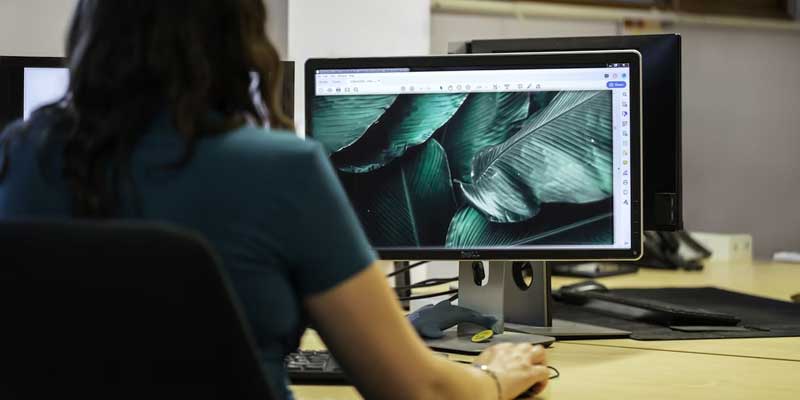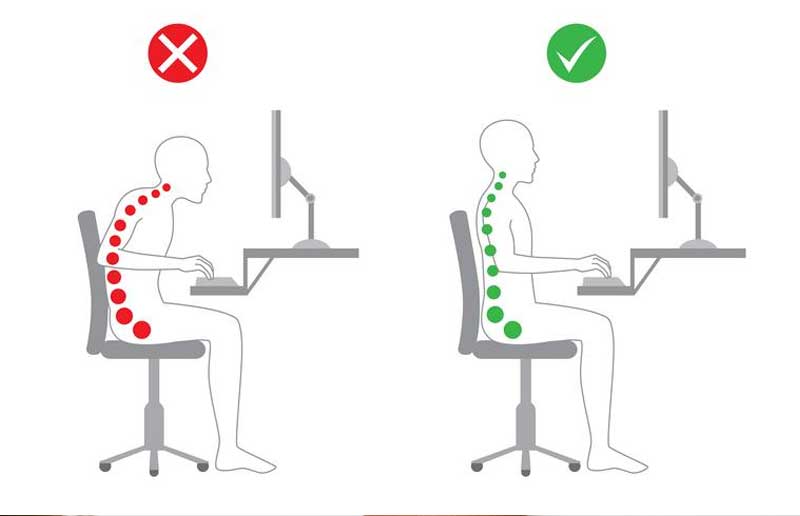A study by Fellowes found that 9 out of 10 people suffer from pain related to office work. Although these symptoms are common, they should not be dismissed, the impact can be long-lasting and affect your overall health.
There are simple solutions to improve work conditions and ensure your routine is comfortable and pain-free. Below, we outline the three main issues and their solutions.
Back, Neck and Shoulder Pain or Tension
One of the most common symptoms is back, neck and shoulder pain caused by bad posture or support while working at their office desk.

Solution for Back, Neck and Shoulder Pain or Tension
An adequate office chair is essential for people sitting for long hours. There is a wide variety of chair options offering different levels of support. Some designs are specifically for those who have suffered from chronic pain from past years of office work.
Even if you are working on a temporary station without an appropriate office chair, you can use a pillow or yoga block as back support, ensuring it maintains the spine’s natural curvature.
Also, add foot support to rest both feet entirely on the surface. Placing only your toes on the floor will contribute to a bad posture.
WORK CONDITIONS CHECKLIST: Seating & Posture
- Chair Height – Keep feet on the floor or a foot support
- Seat Pan Depth – The back of the knees should not touch the seat
- Back Position – Back should contact as much of the chair as possible
- Neutral Posture – Work in a position that requires the smallest amount of muscle activity
Wrist Pain or Pressure
Another common issue is wrist, hand &/or arm pain related to the hours of typing and using computer mice without correct support.

Buy a wrist support to help align your wrists and redistribute pressure points to help relieve pain and prevent potential injury. Position your keyboard and mouse lower and closer to your body, allowing you to adopt and maintain a neutral working posture.
It is a plus if your office chair offers arm support. Adjust the height to ensure you can handle the mice without overreaching.
CHECKLIST: Correct Mice and Keyboard Position
- Correct Keyboard & Mouse Position
- Position the keyboard and mouse closer and lower
- Position the keyboard flat or tilted away – negative slopes
- Keep forearms approximately parallel to the floor with elbows at a 90-110 degree angle.
Eye Strain
Eye strain is not only a symptom faced by people who have to wear glasses. Many employees staring at a screen for long periods report headaches and tired eyes. Partially this issue is caused by the blue light from laptops, tablets and monitor screens.

Use monitor risers to place your screen at a comfortable viewing angle. It would be best to have it at a straight-eye level while sitting in a neutral position.
You can place a blue light filter on these screens to help minimise the impact, and some modern devices can adjust the light through the settings.
CHECKLIST: Adequate Monitor Height
- Find Your Optimal Viewing Range
- Screen Height: Position the top section of the screen at eye level
- Screen Distance: Viewing distance should be about “an arm’s length away” or approximately 500-800mm away from the screen
- Buy filters or adjust the settings on your device to minimise the blue light impact
Overall Important Points about your Work Office Posture
- Head, neck and shoulders are positioned forward and upright (not bent or turned)
- Shoulders and arms are approximately perpendicular to the floor; elbows are held close to the sides
- Keep hands and wrist in a straight line with forearms (not bent up or down)
- Regular breaks and stretches during working hours also improve your health and mood



